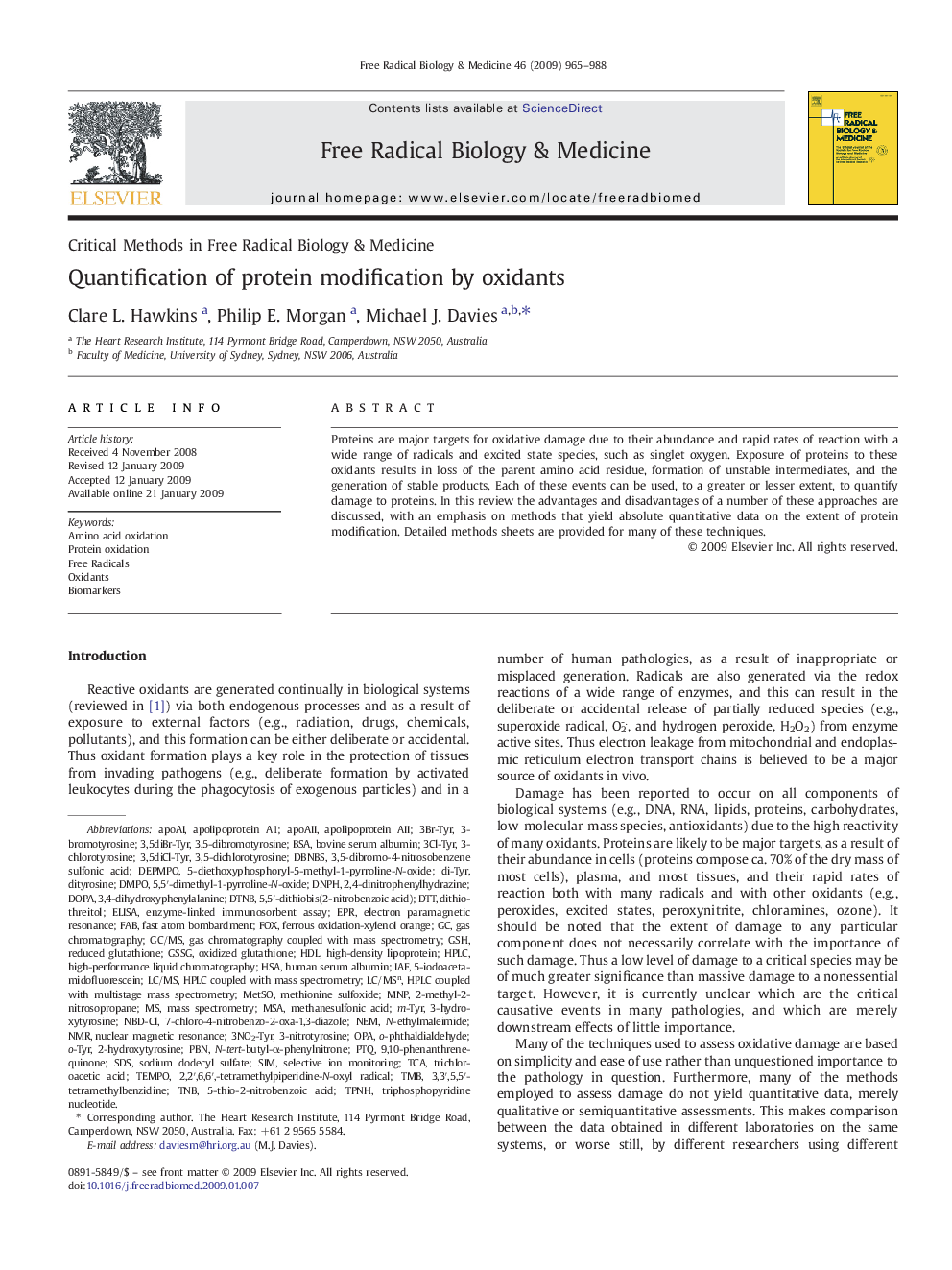| Article ID | Journal | Published Year | Pages | File Type |
|---|---|---|---|---|
| 10738712 | Free Radical Biology and Medicine | 2009 | 24 Pages |
Abstract
Proteins are major targets for oxidative damage due to their abundance and rapid rates of reaction with a wide range of radicals and excited state species, such as singlet oxygen. Exposure of proteins to these oxidants results in loss of the parent amino acid residue, formation of unstable intermediates, and the generation of stable products. Each of these events can be used, to a greater or lesser extent, to quantify damage to proteins. In this review the advantages and disadvantages of a number of these approaches are discussed, with an emphasis on methods that yield absolute quantitative data on the extent of protein modification. Detailed methods sheets are provided for many of these techniques.
Keywords
IAFDBNBSHSATCAN-ethylmaleimideGSHOPAMSAGSSGLC/MSnDTNBDOPATMB3-Bromotyrosineo-phthaldialdehydeFOXApoAITNBPBNMNPDEPMPOHDL3,5-dichlorotyrosinedi-TyrDMPO5,5′-dimethyl-1-pyrroline-N-oxideSDS5-diethoxyphosphoryl-5-methyl-1-pyrroline-N-oxideMetSOapolipoprotein AIIDTTDNPHPTQnuclear magnetic resonance2-methyl-2-nitrosopropane2,4-dinitrophenylhydrazine3-nitrotyrosine3-chlorotyrosine3,3′,5,5′-tetramethylbenzidine3,4-dihydroxyphenylalanine5-Iodoacetamidofluorescein5,5′-dithiobis(2-nitrobenzoic acid)7-chloro-4-nitrobenzo-2-oxa-1,3-diazole9,10-PhenanthrenequinoneBSAGC/MShigh-density lipoproteinLC/MSN-tert-butyl-α-phenylnitroneNBD-Clhuman serum albuminbovine serum albuminApolipoprotein A15-thio-2-nitrobenzoic acidtrichloroacetic acidMethanesulfonic acidAmino acid oxidationProtein oxidationOxidantsFast atom bombardmentELISAEnzyme-linked immunosorbent assayNMREPRElectron paramagnetic resonanceDityrosinedithiothreitolFree radicalsTEMPOsodium dodecyl sulfateMethionine sulfoxideSIMMass spectrometryFabBiomarkersselective ion monitoringNEMreduced glutathionehigh-performance liquid chromatographyHPLCgas chromatography coupled with mass spectrometryGas chromatographyoxidized glutathione
Related Topics
Life Sciences
Biochemistry, Genetics and Molecular Biology
Ageing
Authors
Clare L. Hawkins, Philip E. Morgan, Michael J. Davies,
